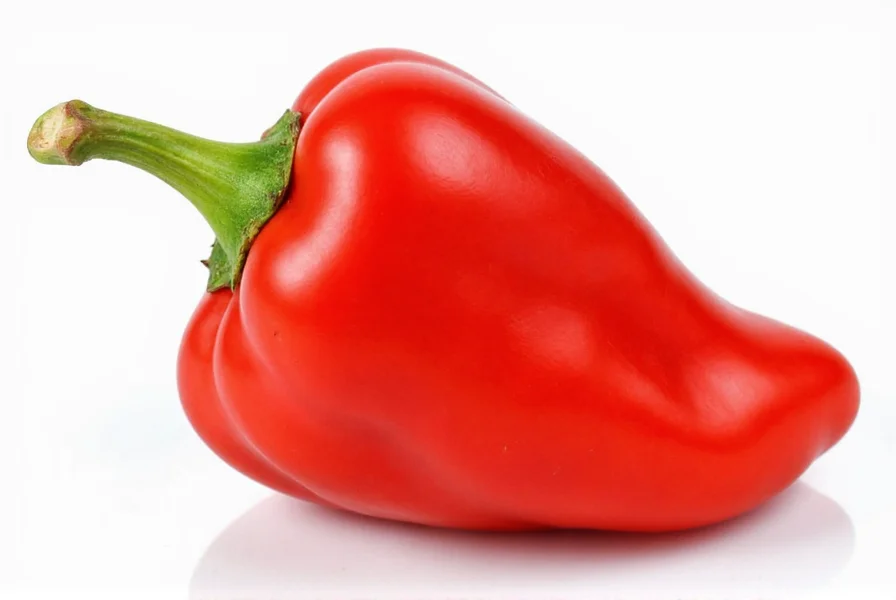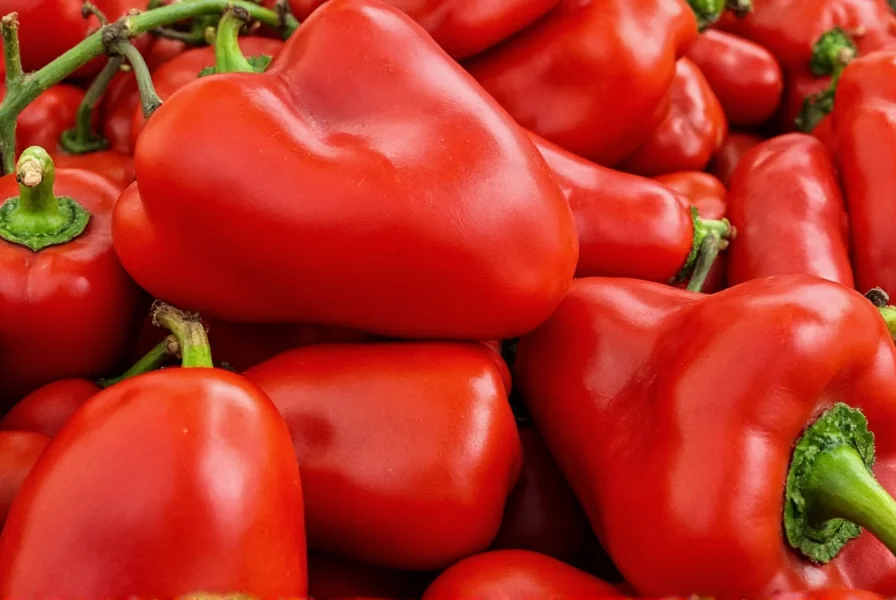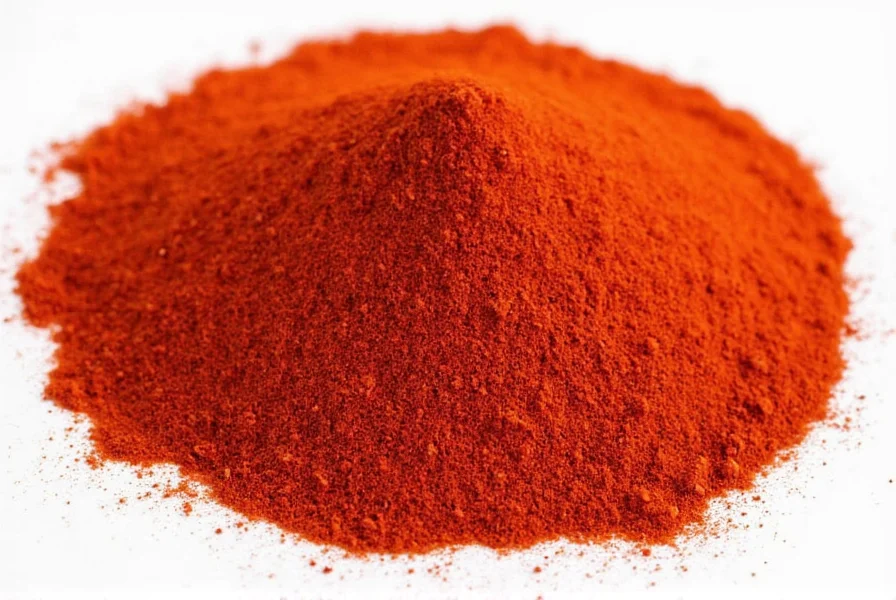Paprika isn't just a single ingredient but a carefully crafted spice with origins tracing back to Central America. While modern paprika production centers in Hungary, Spain, and California, the core composition remains consistent: dried peppers transformed through precise processing. Understanding what paprika is made of reveals why this spice has become indispensable in kitchens worldwide.
The Pepper Varieties Behind Paprika
What ingredients are in paprika? The answer starts with specific pepper cultivars. Most paprika comes from Capsicum annuum varieties including:
- Bishop's crown – Provides fruity sweetness
- Corno di Toro – Contributes deep red color
- Kalász pepper – Traditional Hungarian variety
- Pimiento de la Vera – Used for smoked Spanish paprika
Unlike chili powder which often contains additional spices, authentic paprika contains only ground peppers. The specific pepper selection determines whether the final product will be sweet, hot, or smoked – addressing the common question of what gives paprika its distinctive flavor profile.
| Type | Primary Pepper Varieties | Distinctive Characteristics |
|---|---|---|
| Sweet Hungarian | Kalász, Cseperke | Bright red, mild, slightly sweet |
| Smoked Spanish (Pimentón) | Pimiento de la Vera | Deep mahogany, smoky flavor |
| Hot Hungarian | Hörös Kalász | Fiery heat, vibrant color |
| Sweet California | Bell peppers, Anaheim | Milder, brighter red |
How Is Paprika Produced From Peppers?
The paprika production process explained reveals why quality varies significantly between brands. After harvesting at peak ripeness, peppers undergo specific processing steps:
- Drying – Peppers are air-dried slowly (Hungarian method) or smoked over oak fires (Spanish method)
- Seed and membrane removal – These parts contain most capsaicin, affecting heat level
- Grinding – Stone mills preserve flavor compounds better than high-speed grinders
- Sieving – Ensures consistent texture from fine powder to coarser flakes
What is Hungarian paprika made from specifically? Traditional Hungarian paprika uses peppers grown in the Szeged and Kalocsa regions, where soil conditions produce peppers with exceptional color and flavor. The slow sun-drying process preserves carotenoids that give paprika its signature red hue – answering what gives paprika its red color.

Chemical Composition and Nutritional Profile
Understanding paprika's composition goes beyond just pepper varieties. The spice contains:
- Carotenoids (6-8%) – Primarily capsanthin and capsorubin, responsible for the red color
- Essential oils (0.5-1.2%) – Provide aromatic compounds
- Ascorbic acid (vitamin C) – Up to 140mg per 100g in fresh peppers, partially retained after drying
- Flavonoids – Antioxidant compounds
- Minimal capsaicin – Varies by type (0-58,000 SHU)
Does paprika contain additives? Pure paprika should contain no additives, but some commercial blends may include:
- Rice flour or cornstarch (anti-caking agents)
- Salt (in seasoned blends)
- Other spices (in paprika blends)
When shopping for authentic paprika, check labels for “100% ground peppers” to ensure you're getting pure product without fillers – crucial information for those wondering is paprika just ground peppers.
Practical Implications of Paprika's Composition
Knowing what paprika is made of directly impacts how you use it in cooking. The carotenoids that give paprika its color are fat-soluble and heat-sensitive. For best results:
- Add sweet paprika early in cooking to develop flavor
- Add smoked paprika near the end to preserve smoky notes
- Store in airtight containers away from light to prevent color degradation
- Pair with fats (oil, butter) to maximize color dispersion in dishes
The difference between sweet and hot paprika ingredients lies primarily in capsaicin content. Sweet varieties use peppers with minimal capsaicin, while hot versions retain more of the heat-producing compounds from the pepper membranes.

Authenticity and Quality Considerations
When evaluating what ingredients are in paprika, consider these quality markers:
- Bright, consistent color – Dull or uneven color suggests old or low-quality product
- Strong aroma – Should smell distinctly peppery, not musty
- Texture – Fine, uniform powder without lumps
- Label information – Should specify country of origin and pepper varieties
European paprika often carries Protected Designation of Origin (PDO) status, guaranteeing production methods and ingredients. Look for labels like “Hungaricum” or “Pimentón de la Vera” for authentic products.
Frequently Asked Questions
Is paprika made from only one type of pepper?
No, paprika can be made from various Capsicum annuum varieties. Different regions use specific peppers—Hungary uses Kalász peppers, Spain uses Pimiento de la Vera, and California often uses bell peppers and Anaheim varieties. The pepper selection determines whether the paprika will be sweet, hot, or smoked.
Does paprika contain any additives or fillers?
Pure paprika contains only ground dried peppers. However, some commercial blends may include anti-caking agents like rice flour or cornstarch, salt, or other spices. Always check the label for “100% ground peppers” to ensure you're getting authentic paprika without additives.
What gives paprika its distinctive red color?
Paprika's vibrant red color comes from carotenoids, primarily capsanthin and capsorubin, which are natural pigments in the peppers. These compounds are fat-soluble and can degrade when exposed to light, heat, or oxygen, which is why proper storage in airtight containers away from light is essential for maintaining color quality.
How does the production process affect paprika's composition?
The drying method significantly impacts paprika's final composition. Traditional sun-drying preserves more carotenoids for brighter color, while smoking over oak fires creates smoked paprika with distinct flavor compounds. Seed and membrane removal controls heat level, as these parts contain most capsaicin. Stone grinding preserves volatile oils better than high-speed industrial methods.
Can I make paprika at home, and what would it be made of?
Yes, homemade paprika contains just one ingredient: dried peppers. Select ripe red peppers (bell peppers for sweet paprika, cayenne for hot), remove stems and seeds, dry thoroughly (in a dehydrator or oven at low temperature), then grind to a fine powder. The process takes 1-2 weeks but yields pure paprika without any additives.











 浙公网安备
33010002000092号
浙公网安备
33010002000092号 浙B2-20120091-4
浙B2-20120091-4